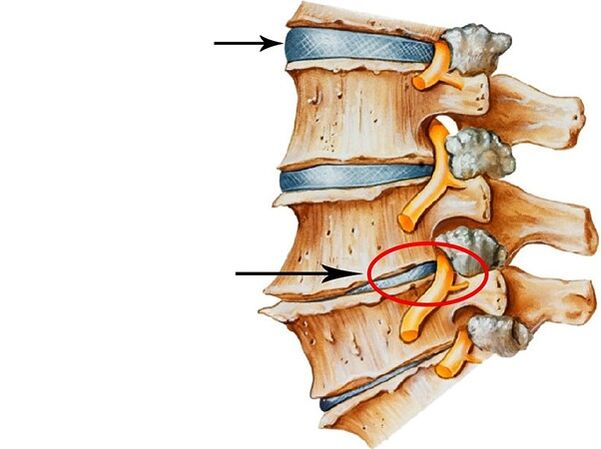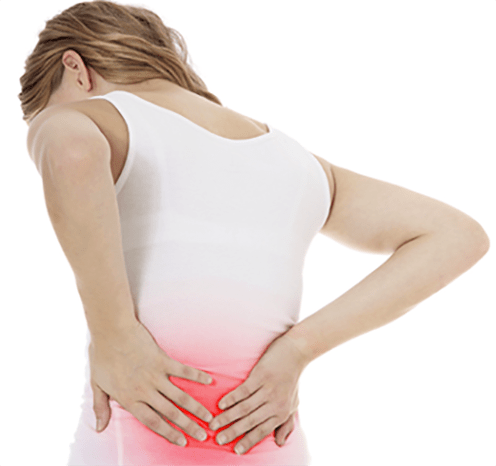Osteocondrosis is one of the most common pathologies of the spine.In this disease, it affects the cartilage tissue of the spine and intervertebral discs.Most often, osteochondrosis affects the lumbar region as it has the maximum load during walking, sitting, running and other activities.
If the treatment does not begin in time, the disease can lead to a disability of radiculitis, vertebrae hernia, lumbago, isias.
Stages of development
The disease is usually divided into several stages:
- Stage 1- There are minor changes in intervertebral discs, the spine is not deformed, the person feels slight pain in the lower back.
- Section 2- The pain in the affected area becomes increasingly stronger, and the intervertebral discs are more noticeable.
- Section 3- There are intervertebral hernia, the spinal column is deformed.The patient feels severe pain in the affected area.
- Stage 4- It will be difficult for a person to walk and move.The pain occurs with a slight movement.At this stage, the latter, the patient generally has a disability.

Reasons
Most often, people whose profession or type of activity involves physical efforts and a heavy burden on the lumbar class: builders, movers, utilities and athletes are exposed to osteochondrosis.Pathology can also occur in teachers, cashiers, office workers, as most of the time is spent in a sitting position.
Many factors affect the occurrence of osteochondrosis:
- Lack of physical effort, completing a sedentary lifestyle.
- Strong load in the lumbar region.
- Joints and spine diseases.
- Injuries of the lumbar spine.
- Flat foot or club foot.
- Obesity.
- Poster disorders, Stoop.
- Skoliosis or kyphosis.
- Long -term hypothermia.
- Changes in the spine related to age.
- Genetic predisposition.
- Some internal diseases of cardiovascular, nervous, endocrine systems.
- Inadequate nutrition.
Symptoms
The main signs of osteochondrosis of the lower back are as follows:
- He's severe pain in the lower part, sometimes giving up the leg and increasing any movement, sneezing, cough, etc.
- Constant tension of the back muscles.
- It is impossible to straighten your back after a long stay in the same position.
- Unpleasant feelings when deciding or extending the back.
- Lamps in the lower back.
- Loss of sensitivity in the bottom, hips.
- Goolebumps, feeling of tingling legs.
- Numbness of legs and legs.
- The constant coolness of the legs and the cold feeling of the legs.
- Varicose veins.
- Violation of men's efficiency.
- Irregular menstruation in women.

The main symptom of pathology is pain when appearance should urgently consult a doctor.
Diagnosis
Diagnosis of osteochondrosis begins with a thorough examination of the patient and collecting a history - the doctor asks the patient about the genus osteochondrosis, chronic diseases, lifestyle, type of activity, joint diseases and spine.
In addition, the specialist prescribes instrumental diagnostic methods, including:
- The lumbar region of X -Sugara- Allows you to detect the presence of pathology and spine damage.
- Computer Tomography (CT)- A more accurate research method that allows for damage to the intervertebral discs, the extent of change, and the degree of deformation of the spine.
- Mri- allows you to carefully study intervertebral discs, provide information on minor disorders in the spine, use it in difficult cases, or if the examination image is unclear by CT or X -Ray.
- Myelography- A type of diagnosis in which a contrast agent is used to detect intervertebral hernia.
According to the data, the specialist determines the degree of pathology and prescribes the necessary treatment.
Treatment
Osteochondrosis is treated comprehensively.Only one doctor prescribes the necessary medications and procedures, strictly separate.
Above all, the patient prescribes a number of drugs based on NSAIDs -non -steroid anti -inflammatory drugs that can relieve inflammation and eliminate pain in the affected area.Chondroprotectors are also prescribed - drugs that stop the process of destroying cartilage and cartilage.Vitamins that improve the condition of the whole body are prescribed as additional drugs.
Many diseases of the spine, including osteochondrosis, are prescribed physiotherapy.The procedures are able to increase blood circulation at the lesion, relieve muscle tension, eliminate pain and inflammation.In the case of osteochondrosis, electrophoresis, acupuncture, magnetic therapy and other procedures are prescribed.
The patient is also written by massage, mud baths or hydrotherapy to relieve muscular tension and fatigue, alleviate and improve the bloodstream.Muddy mud baths can eliminate the inflammatory process.
In the first phase of the disease, exercise therapy is prescribed - a colorful gymnastics whose performance promotes the restoration of the mobility of the spine to strengthen the back muscles.In sections 3 and 4 of osteochondrosis, this type of treatment is not used.
The diet is very important in the treatment of the disease - the dietary products rich in minerals should be involved - fruits, vegetables, porridge.Be sure to eat low greasy meat because of rich protein - this is the most useful chicken or turkey meat.It will be useful to use fermented dairy products.We recommend that you reduce the amount of fatty, sharp, smoked, fried foods.It is important to observe the type of drinking - make sure you drink at least 1 liter of clean water a day.
Treatment of osteochondrosis of the lumbar region will be useful in the sanatorium, where experts treat the disease during the patient's full residence and the patient is constantly under the supervision of doctors.
If conservative treatment methods do not help, the treatment surgery is used.During the operation, the affected wheels or cartilage is replaced by an implant.And if there is a vertebral hernia, it will be removed.
Prevention
- Limits the load on the back.
- Play sports, do breakfast exercises.
- Eat well.
- Try to prevent lumbar spine injuries.
- Avoid the lower back of the lower back.
- With a long session, change your body position more often, get up regularly and perform simple exercises for heating or just walk.
- Save the proper posture, do not stop.
- For club feet or flat feet, wear special orthopedic insoles that reduce the load on the spine.


















































